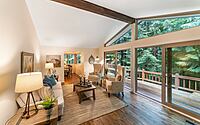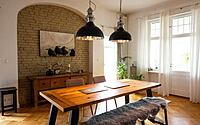A Hard Look at Hardwood Flooring for the Home
If it’s luxury and practicality you’re looking for in flooring finish, you can’t go wrong with hardwood flooring. Hardwoods not only look great, but they are the perfect choice if you and your family members suffer from allergies. Simply said, carpeting is the ideal breeding ground for pollen, dirt, dust, and pet dander. Even after vacuuming, most of the allergens remain.
But hardwood floors don’t harbor allergens and are simple to clean with a mop and some soap and water. That said, how should you go about choosing suitable hardwood floors for your home? According to a recent report by Architectural Digest, selecting a floor covering is one of the simplest yet most important decisions you, as a homeowner, will face.
There are many options, from terrazzo to carpeting, but one natural material remains the golden standard: hardwood flooring. As the design experts agree, however, not all hardwoods are the same, and you can’t just pick a floor based on its color. You need to consider other factors such as overall performance, longevity, appearance, and price.
Whether you’re the type to DIY your hardwood floor installation or require the services of a certified professional, here is a hard look at hardwood flooring for your home.
Engineered Flooring or Select Hardwood
In past decades, hardwood flooring was only available in thick, solid timber planks. You can still acquire these planks today, but most companies now prefer to sell “engineered flooring” or planks engineered with a thin layer of hardwood that’s bonded to several layers of wood. This prevents the flooring from shifting during contraction and expansion cycles that naturally occur depending on the temperature.
Wood is said to move in three different directions: longitudinal, radial, and tangential. By going with an engineered product, you restrict much of that movement.
Regarding basements containing concrete subflooring, engineered wood flooring is said to offer an installation advantage. While solid wood requires three or four layers which will raise the height of the floor and limit ceiling height, engineered flooring is glued directly to the concrete and will not interfere with door clearances.
Site Finish or Prefinished
According to construction professionals, you can purchase hardwood with a “raw face” that can be finished once it is professionally installed. Or you can buy prefinished hardwood that’s already applied a topcoat of stain. The direct advantage of the latter is that there are no surprises when you get home since you already know what you’re getting. This helps you coordinate other home finishes like walls, doors, and cabinets.
But by going with a raw face, you’re more or less taking your chances on getting the color right, which means you should hire a professional flooring contractor to ensure color coordination goes seamlessly. But raw-faced flooring also allows you to customize your home’s design, and you will have much more control over sheen and stain.
Types of Finishes
A wide variety of finishes exist when it comes to hardwood flooring. You can choose prefinished UV-cured urethane, penetrating oil, oil-like hybrids, and even site-finish polyurethanes. To simplify the process, you can choose an oil finish or a poly finish.
Since oil penetrates the wood, it offers a natural matte finish. However, it’s not as “impervious to stains” as the poly finish since it creates a hardened topcoat that is virtually impenetrable. Poly is a better choice for floor finishes, especially if you have little children running around.
While an oil finish is easier to maintain, you must do it more often. On the other hand, while poly requires less maintenance in general, the repairs you find yourself engaging in can be pricey, especially if they entail an entire refinishing.
Choosing Your Wood Types
This is the most important, if not the most complex, decision you’ll make when choosing the right hardwood flooring for your home. Experts agree that in North America, the reigning king of hardwood floor is oak, and it’s not only highly durable but also easily takes stain finish.
Oak contains a natural grain, which you’ll also want to look for in your flooring. The natural grain is said to be widely available across the continent and can be purchased at reasonable prices.
White oak is considered the preferable choice over red oak since it doesn’t contain pink tones. Poplar is another popular choice, even if it is softer than oak. However, its rich color is preferable in darker rooms with wood wall paneling. You might want to look at a natural poplar color for a warm, rich tone that can establish a relaxing mood inside a sitting room, for instance.
Other popular hardwoods include ash, cherry, hickory, and maple. It all comes down to your personal preference when it comes to grain patterns, coloring, and ease of maintenance.
- by Matt Watts






